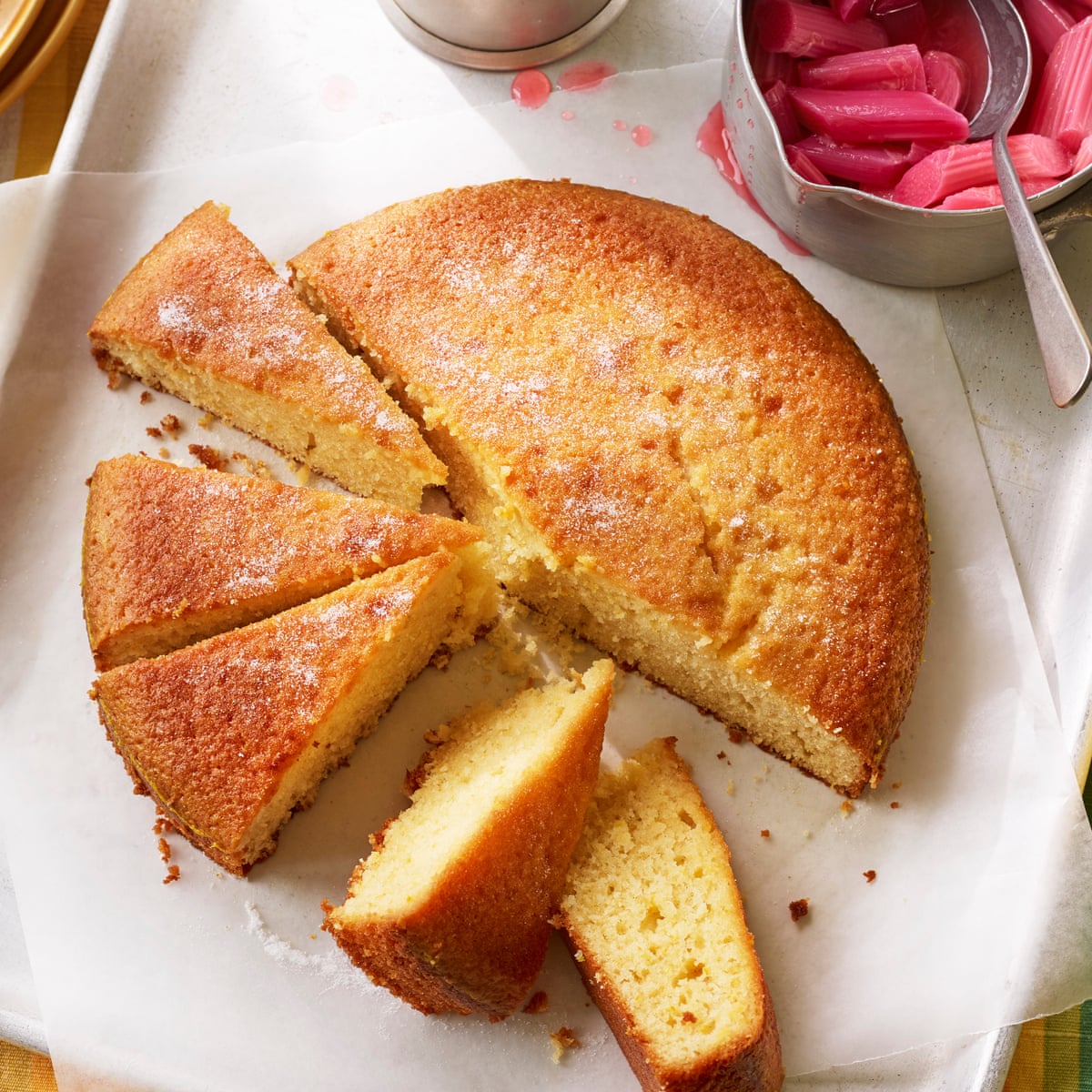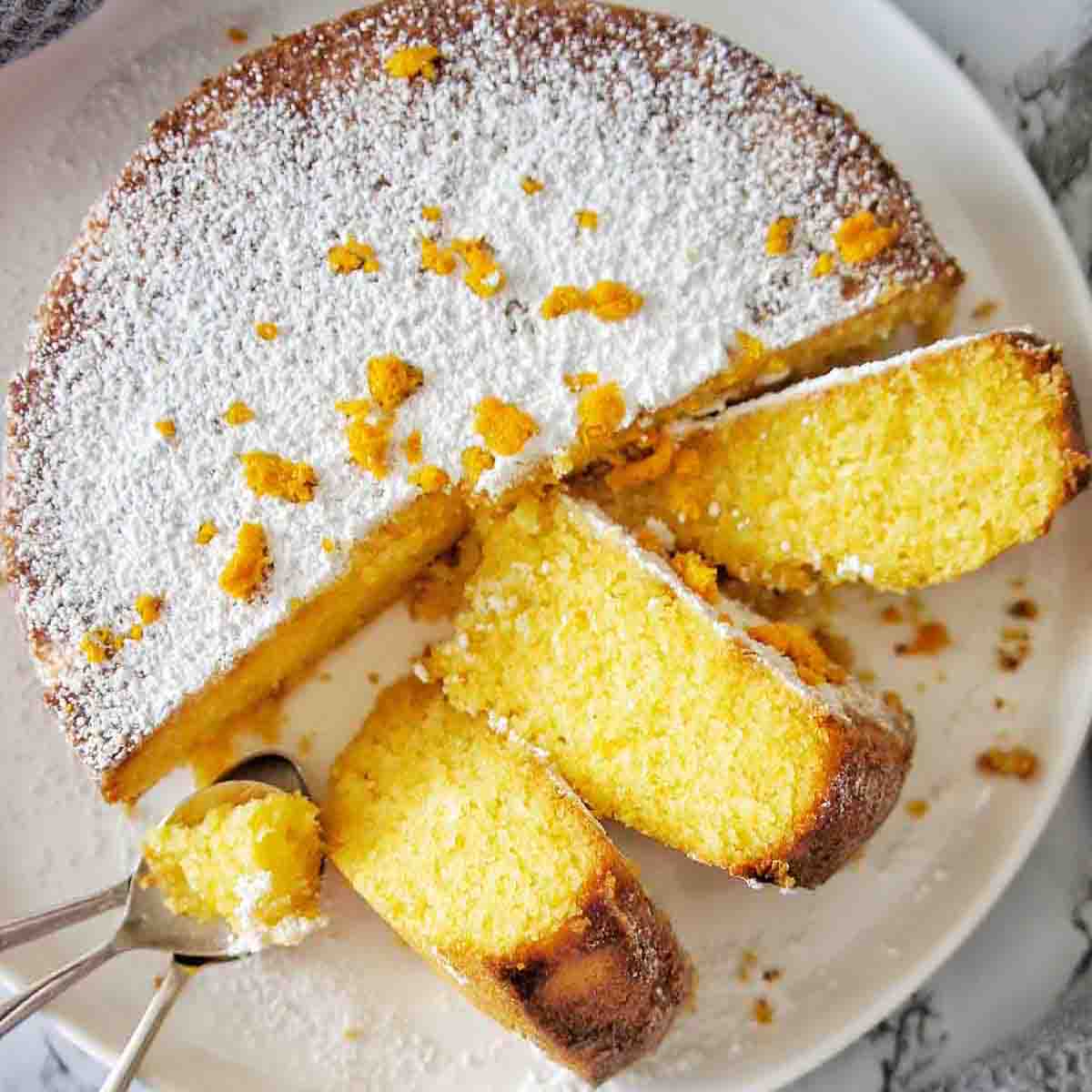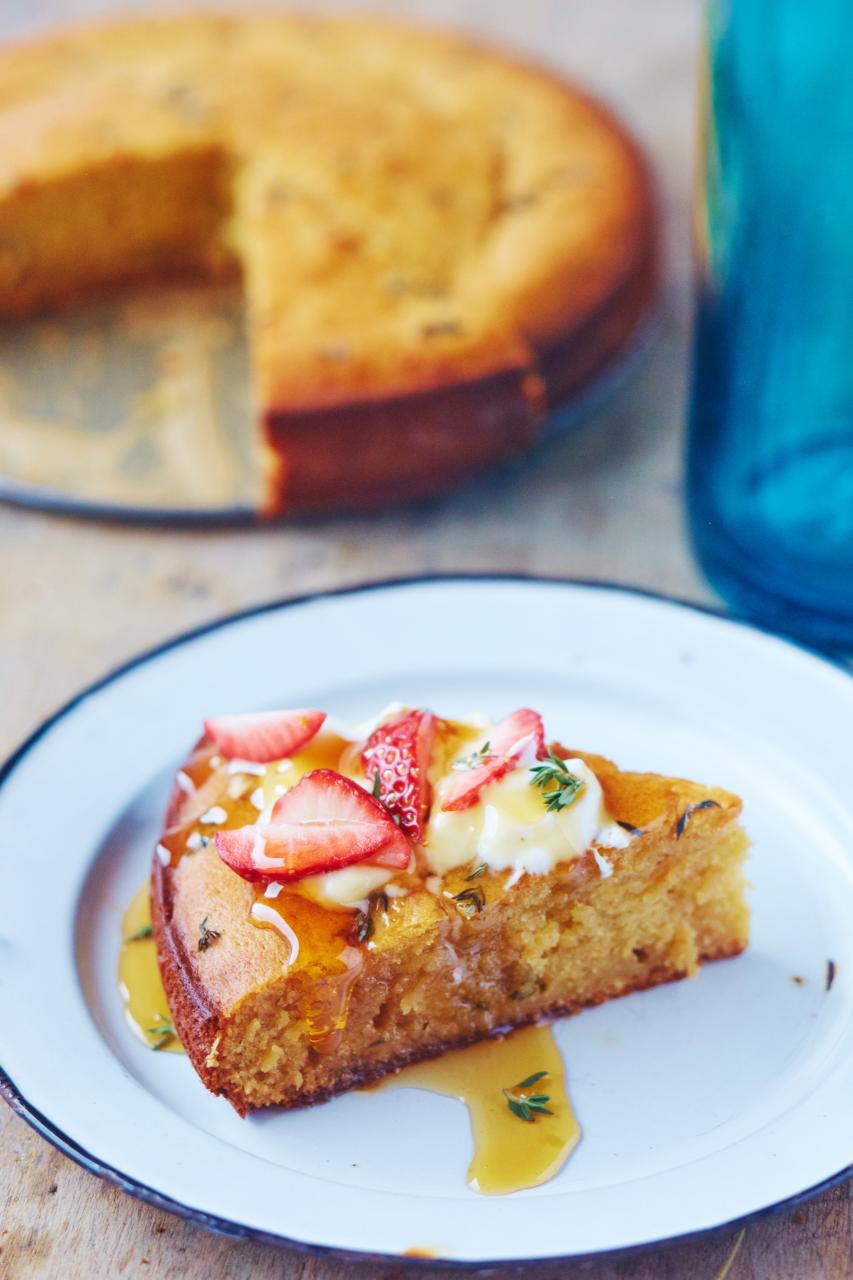The allure of a Greek Yoghurt Honey Cake lies in its delightful balance of tangy and sweet, a culinary ode to the simplicity of Mediterranean flavors. On an afternoon when the light pours in just right, casting a warm glow over the kitchen counter, the urge to bake something that feels both comforting and slightly exotic is irresistible. This cake, with its creamy yoghurt and the golden kiss of honey, becomes a beacon of that desire.
There’s a certain joy in gathering the ingredients, each one reminiscent of sun-drenched landscapes and the hum of bees at work. The Greek yoghurt, thick and velvety, promises a moist crumb, while the honey whispers of ancient groves and fields. It’s not just about satisfying a craving for something sweet; it’s about honoring the timeless traditions that these ingredients carry with them.
Baking this cake feels like an act of homage to simpler times, a way to slow down and savor the process of creating something from elements that have been cherished for centuries. The anticipation of the first slice, drizzled perhaps with a little more honey or adorned with a sprinkle of chopped nuts, is a testament to the enduring appeal of rustic, wholesome desserts.
So let us preheat our ovens and ready our pans, embarking on a baking journey that bridges the old world with the new, and invites us to indulge in the understated elegance of a Greek Yoghurt Honey Cake—a treat that’s as nourishing to the soul as it is to the palate.
Greek Yoghurt Honey Cake Recipe


Greek Yoghurt Honey Cake
Ingredients
Equipment
Method
- Pre-heat the oven at 180ºC. Grease and line a 9″ springform cake tin.
- Mix all the dry ingredients (except the sugar) together and combine the yoghurt and honey in a separate small bowl.
- Using a hand mixer, beat the butter and sugar together until light and fluffy. Beat in the eggs, one by one, along with the vanilla.
- Add the yoghurt and honey and mix well.
- Add the flour mixture and mix until fully incorporated.
- Transfer the mixture into the cake pan and bake in the oven for 30 – 40 minutes, depending on your oven, until golden brown. Test if the centre is done by using a toothpick; if it comes out clean, take it out and let it cool for 10 minutes, before removing from the tin to cool completely.
- Serve with a drizzle of honey and even a dollop of Greek yoghurt if that tickles your fancy, and enjoy!
How to make Greek Yoghurt Honey Cake using air fryer

The air fryer, often hailed for its crispy delights, can also be a conduit for the tender, moist magic of Greek Yoghurt Honey Cake. As I embark on this baking venture, there’s a sense of reverence for the ingredients—rich Greek yoghurt and aromatic honey, each a nod to tradition and simplicity.
In the quiet of the kitchen, I whisk together the ingredients, each addition a step in the dance of baking. The air fryer preheats, a modern hearth where this age-old combination will transform. Pouring the batter into a suitable pan that nestles into the air fryer basket, I’m filled with a gentle anticipation.
The cake bakes quickly, the air fryer’s compact space sealing in moisture and infusing each crumb with the tangy sweetness of honey. It’s a small act of everyday alchemy, turning humble components into a dessert that feels both comforting and celebratory.
Once done, the cake begs to be drizzled with more honey, its golden surface a canvas for the final touch. This Greek Yoghurt Honey Cake, born from an air fryer, is a testament to the blending of old-world charm with new-world innovation—a sweet slice of harmony.
Tips for making Greek Yoghurt Honey Cake

Cooking Tips
- Use full-fat Greek yoghurt for a luxurious texture. Its creaminess is the secret to a moist crumb that melts in your mouth.
- Local honey not only supports your community but also brings a taste of your region’s flora to the cake. Its subtle flavors will shine through.
- Gently fold the flour into the wet ingredients to keep the batter airy and light. This care ensures a tender cake that honors the delicate balance of ingredients.
- A hint of citrus zest can elevate the cake, adding a bright note that complements the honey’s sweetness and the yoghurt’s tang.
- Savor the process, from the measuring to the mixing. Baking this cake is a sensory journey that culminates in a sweet, golden slice of comfort.
Serving Suggestion

Serving Greek Yoghurt Honey Cake is a gesture that feels both nurturing and celebratory. I take pleasure in slicing the cake, each piece a perfect blend of rustic charm and sweet indulgence. The cake’s moist crumb, enriched with yoghurt and honey, invites a simple yet elegant presentation.
I often choose to serve it on a ceramic plate that complements its homely appeal, perhaps with a drizzle of honey cascading over the slice, pooling at its base. A scattering of crushed nuts or a few edible flowers can add a touch of finesse without overpowering the cake’s natural beauty.
Sharing this cake is like sharing a story, one of timeless ingredients and the joy they bring when combined with care. It’s an offering that speaks of comfort and simplicity, inviting those who partake to pause and appreciate the subtle artistry of a well-baked cake.
Top 5 FAQs about Greek Yoghurt Honey Cake

- Can I use regular yoghurt instead of Greek yoghurt? The thickness and creaminess of Greek yoghurt contribute significantly to the texture of the cake. Using regular yoghurt, which has more whey and is less creamy, can result in a less dense and moist cake. If you must substitute, consider straining regular yoghurt to remove excess liquid.
- How does honey affect the baking process? Honey is not just a sweetener; it’s also hygroscopic, meaning it attracts moisture. This helps keep the cake moist but can also cause it to brown more quickly. It’s advisable to check the cake a bit earlier than you would with a sugar-based recipe to prevent over-browning.
- What’s the best type of honey to use for this cake? The choice of honey can influence the flavor profile of your cake. A floral, light honey will impart a subtle sweetness, while a darker, richer honey will provide a more robust taste. Local, raw honey is often recommended for its fresh and unique flavors.
- Why did my cake turn out dry? There could be several reasons for a dry cake. Overbaking is a common culprit, as is measuring ingredients incorrectly. Make sure to use the spoon-and-level method for flour, and don’t press it down into the cup. Also, ensure your oven isn’t running hotter than the recipe suggests.
- Can this cake be made in advance? Yes, Greek Yoghurt Honey Cake keeps well due to the moisture from the yoghurt and honey. It can be made a day or two in advance and stored in an airtight container at room temperature. In fact, some find that the flavors meld and deepen when the cake is allowed to rest.
In conclusion, the Greek Yoghurt Honey Cake is a harmonious blend of rustic tradition and contemporary taste. It’s a dessert that speaks to the soul, offering a comforting sweetness balanced by the tangy richness of Greek yoghurt. The honey infuses the cake with a depth of flavor that is both subtle and complex, reminiscent of the Mediterranean sun from which it draws its inspiration.
The cake’s moist, tender crumb is a testament to the careful melding of ingredients, each chosen for their quality and contribution to the final masterpiece. Baking this cake is an exercise in patience and precision, a culinary ritual that rewards the baker with a sense of accomplishment and the eater with a slice of pure, unadulterated joy.
Whether enjoyed as a simple treat alongside a cup of tea or dressed up for a special occasion, the Greek Yoghurt Honey Cake stands as a reminder of the beauty found in simplicity. It’s a cake that invites us to slow down, to savor each bite, and to appreciate the timeless combination of flavors that have been cherished across generations.
